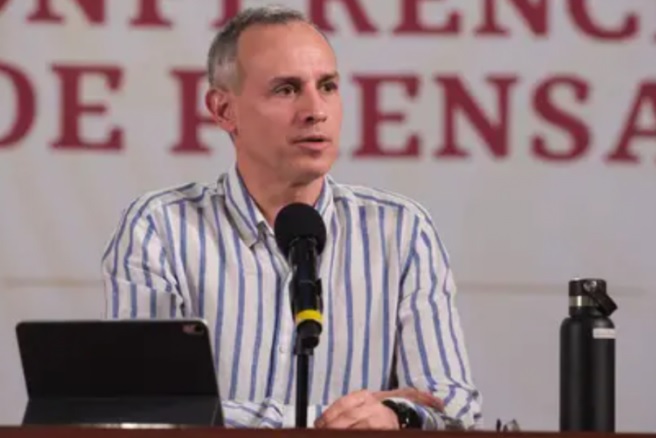When Mexican Deputy Health Minister Hugo Lopez-Gatell left the presidential palace on June 11, he was met with white roses, a cake and a mariachi band, there to thank him for his handling of a pandemic that has so far claimed more than 233,000 Mexican lives.
Less than a month later, that celebration appears to have been pre-mature.
That same week in June, Mexican officials pushed forward with re-opening schools and permitting restaurants, stadiums and cinemas to boost capacity. COVID-19 cases sky-rocketed in some parts of the country.
Infections spiked 64% in three weeks, according to health ministry data.
“You can definitely talk about a new rebound,” said Laurie Ximénez-Fyvie, a professor and molecular genetics investigator at National Autonomous University of Mexico (UNAM).
The accelerated pace of the increase could lead to a “catastrophic” situation, she added.
In the state Baja California Sur, home to beach destinations like Los Cabos, infections jumped 366% in June to 1,721 cases, up from 369 a month earlier, health ministry data showed. Daily cases in the state during the month of June exceeded the numbers recorded at the height of the pandemic in January.
Despite the spike in cases, however, deaths and hospitalizations have remained fairly low.
The new cases are seen mostly in younger people, and for now, the highly contagious Delta variant has not spread widely in Mexico. With the majority elderly almost fully vaccinated, officials are cautiously optimistic the worst has passed.
Mexico’s vaccine campaign has been slow and still has a long way to go before the government’s goal of at least one dose for everyone over the age of 18 by October. So far, only about 24% of Mexico’s 126 million people have had their first shot.
TOURISM AND HURRICANES
At least a third of Mexico’s 32 states have marked an increase in coronavirus cases since the beginning of June. Tourist hot spots along Mexico’s coastline were especially hard hit.
Mexico is one of the few countries in the world that does not require a negative COVID-19 test to enter, making it a popular option for international tourists, particularly from the United States. Local governments are pinning hopes of an economic boost on a rebound in tourism.
The Pan American Health Organization (PAHO) warned last week that the reactivation of tourism and the onset of hurricane season could aggravate the pandemic due to increased movement and a lack of social distancing and ventilation during a storm.
Despite the increase in cases, there are almost no government restrictions on mobility or capacity.
CLICK HERE FOR FULL ARTICLE BY Diego Oré ON WSAU.COM


